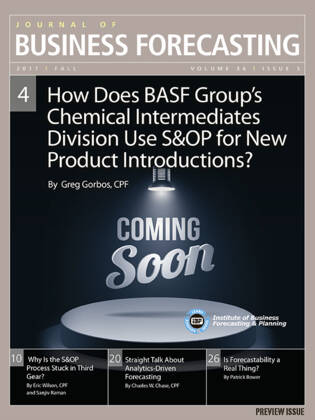Straight Talk About Analytics-Driven Forecasting
Analytics-driven forecasting means more than measuring trend and seasonality. It includes all categories of methods including more advanced methods, such as artificial intelligence, but not necessarily deep learning algorithms. Expert systems are an integral part of artificial intelligence, also known as “symbolic artificial intelligence” (AI), which is designed to think like a human. AI is differentiated from “sub-symbolic artificial intelligence,” which includes the newly revived research area of neural networks and deep learning. Even with all the buzz about AI and machine learning (ML), not many are using either for demand forecasting, if they do, it’s on a one-off basis, not on a large scale across the entire business product hierarchy. In fact, many companies feel that AI and ML is the new demand forecasting “easy button,” which I remind them only works in those Staples commercials. You still need data scientists to monitor and tweak models using analytics-driven methods to make corrections if something dramatically changes. And demand planners are needed to own and manage the demand planning process.
From Issue:
How Does BASF Group’s Chemical Intermediates Division Use S&OP for New Product Introductions?
(Fall 2017)









